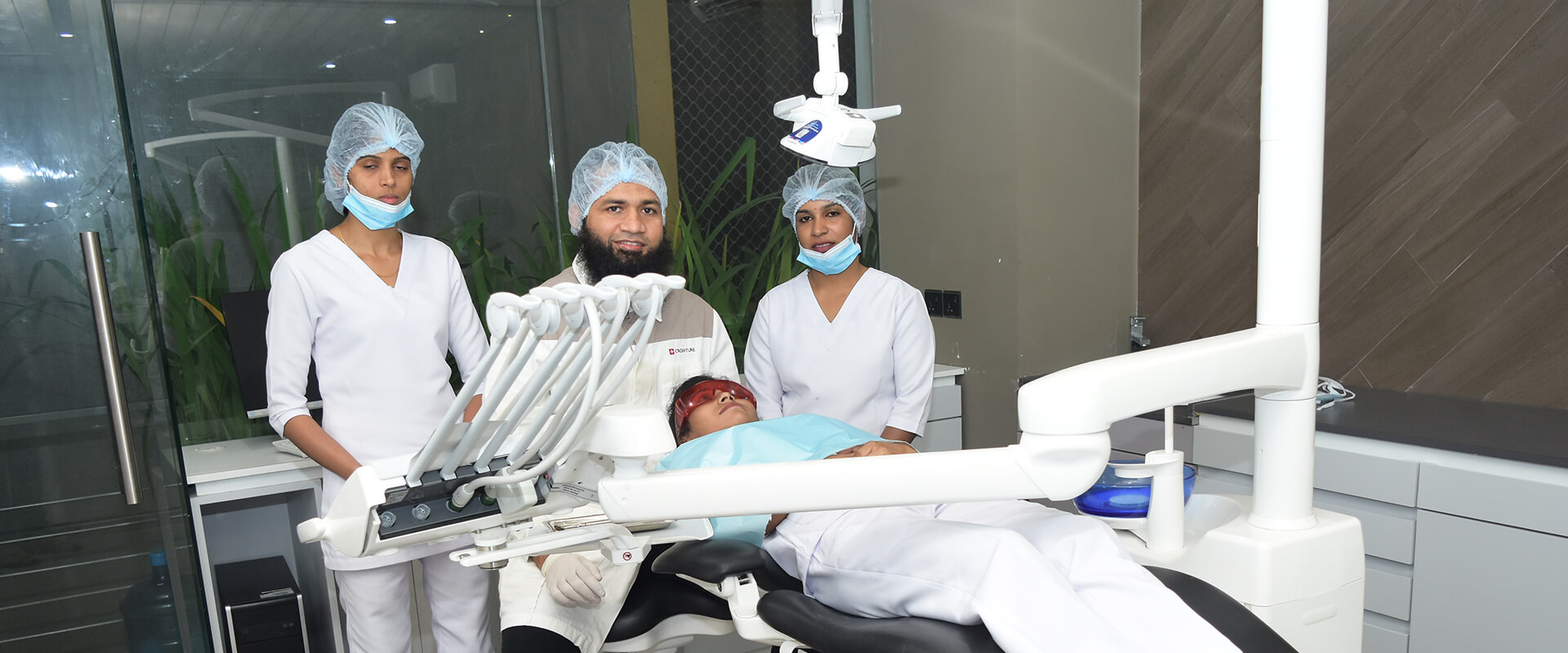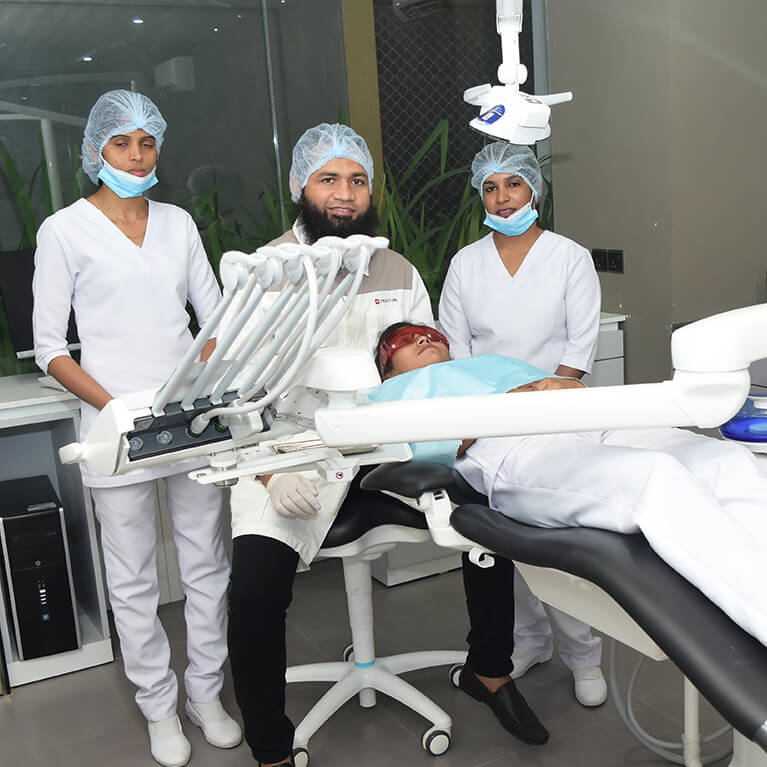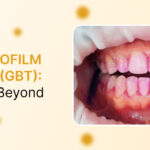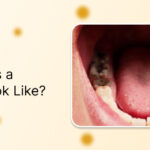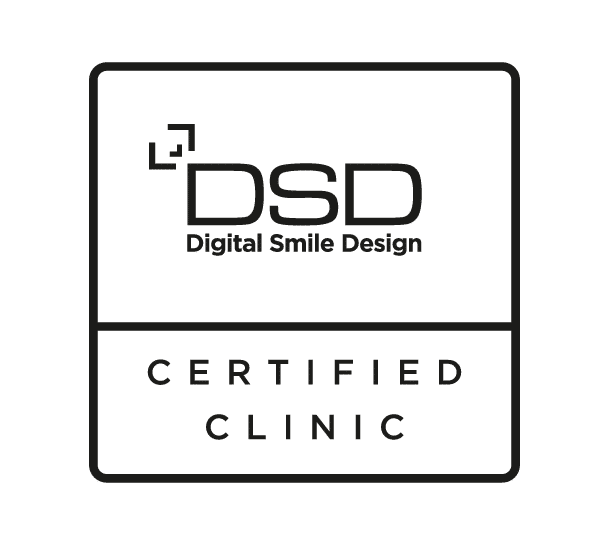All you need to know about a single misaligned tooth
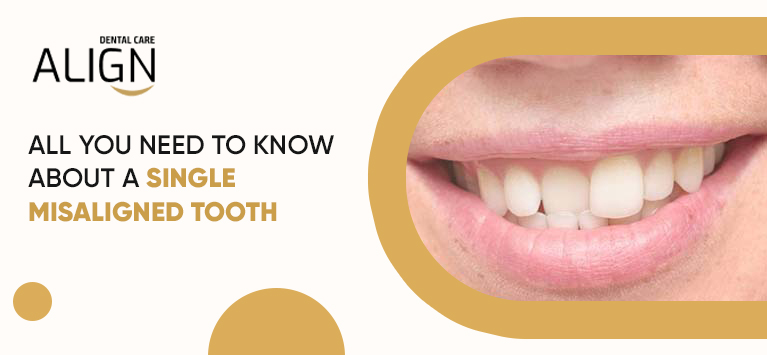
What is snaggletooth?
A snaggle tooth is a single misaligned tooth that differs from the rest of your teeth in shape or placement. Depending on how the tooth is misaligned , you may face discomforts and may feel difficult during brushing and flossing in certain areas.
The phrase “snaggle tooth” is sometimes used colloquially to describe a single tooth that is noticeably out of alignment, giving the person’s smile a somewhat crooked or uneven appearance.
Causes of snaggletooth
Numerous things, including genetics, childhood practices, and problems with oral development, can contribute to this illness. Let’s discuss in detail. Your teeth will twist or move one or more teeth backward or forward if there is not enough room for them to line up properly.
Genetics
Genetics has an impact on how teeth naturally align. There is a greater likelihood that their children may experience similar dental issues if their parents or other close relatives have misaligned teeth
Thumb Sucking or Pacifier Use
Using a pacifier or thumb sucking for an extended period of time throughout early childhood might cause teeth to erupt out of alignment
Early Tooth Loss
Losing a baby tooth too soon without taking the correct steps to maintain the space, might cause the teeth next to it to shift and become misaligned
Jaw Growth Disorders
Problems with jaw development and growth can also cause dental misalignment
Chronic mouth breathing
Chronic mouth breathing,which is frequently brought on by allergies or other conditions, can gradually change the position of teeth
Poor or changing tongue posture
An improper or shifting tongue position might alter the position of teeth
Ways to fix a snaggle tooth
The most important determining criteria for the type of therapy needed are age and the severity of the misaligned teeth.
In cases of modest crowding, dental bonding or veneers may be used to improve the tooth’s appearance without requiring comprehensive orthodontic treatment.
Veneers are very thin porcelain or composite shells that are manufactured specifically for each tooth’s shape. When a person has two crooked teeth or slightly damaged snaggle teeth, veneers might be quite beneficial.
When teeth are often out of alignment, metal braces or clear Aligners are preferable.All you need to know about snaggletooth
Braces
One of the most widely used techniques for straightening outcropping teeth is braces. They work by exerting pressure on your teeth with brackets and wires that are attached (one on each tooth).
Braces can be worn for as little as a few months or as long as two years, depending on a person’s oral health. To help stabilize your teeth when the braces are removed, you will need a retainer for the rest of your life
Invisible Aligners
Because of its effectiveness and user-friendliness, aligners are a popular alternative to braces for teeth that are out of alignment. Aligners are invisible plastic trays that are attached to your teeth and function similarly to braces.
The fact that aligners are transparent objects that allow you to express yourself freely is one of their main advantages. You are not required to adhere to any dietary restrictions, and maintaining them is very simple
Tooth Contouring
Tooth contouring is the least expensive solution and is recommended to treat mild cases of protrusion. Without seriously affecting the enamel, small amounts of the tooth will be removed so that the cosmetic issue can be fixed to a great extent
Surgical options
In severe cases where the misalignment is caused by jaw problems, surgery may be required to straighten the teeth and jaws.
Bottom Line
One or more teeth that are obviously misaligned, projecting, or sticking out from the rest of the teeth’s regular alignment are referred to as “snaggletooth” conditions in dentistry. Even if it has become fashionable in recent years, there is no need to clumsily stare at your crooked teeth.
Snaggletooth refers to a particular type of tooth misalignment in which one or more teeth are positioned differently from the neighboring teeth. This may result in the smile looking less aesthetically attractive.
It is advised that you see a dentist or orthodontist if you have misaligned teeth so that they can offer personalized advice and treatment choices depending on your particular condition.
Everything You Need to Know About Teeth Pulpotomies
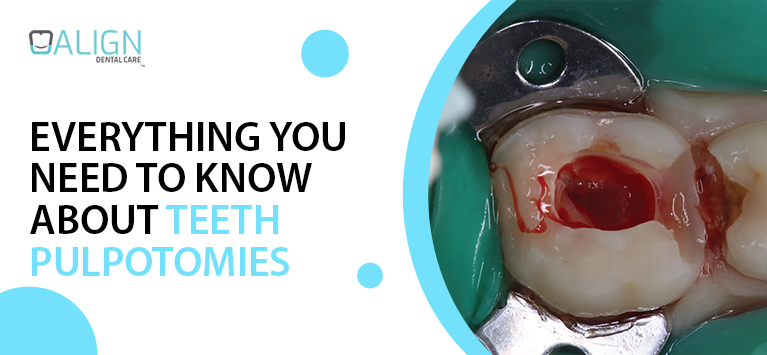
A pulpotomy procedure involves removal of coronal pulp while trying to preserve the health of the remaining radicular pulp tissue.
It is one of the most widely used methods to save infected, decayed teeth. Your dentist might recommend it if you or your child has a severe cavity and pulpitis, an inflammation of the pulp inside the tooth.
What is meant by Pulpotomy?
Read More…How does deep dental cleaning benefit your oral health?
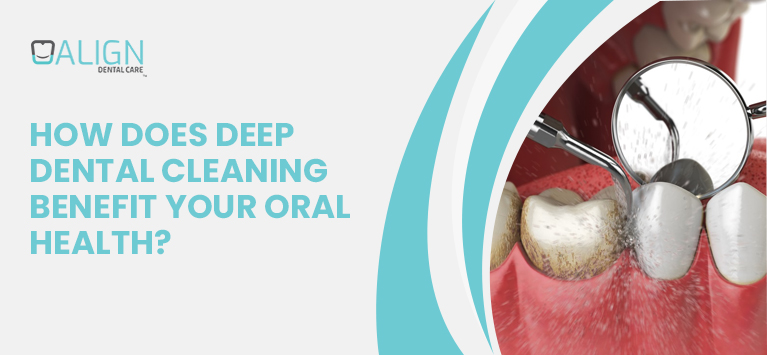
Deep dental cleaning, also known as “Teeth Scaling” and “Root Planing” is more than routine dental cleaning. The routine dental cleanings aim at removing sticky & hard deposits on teeth surfaces above the gums. Deep cleanings tend to microbial accumulations beneath the gum line using ultrasonic instruments and other sophisticated tools. It encourages the gums to reattach with the teeth. Hence, you can cease the progression of gum infections.
If your dentist prescribes you need a deep dental cleaning procedure, it shows oral bacteria piled deeply between teeth and gums. Despite the root planing treatment seems complex, it is completed within 30 to 45 minutes. Depending on the depth of your infection, your dentist might recommend more than one deep teeth cleaning sitting.
Read More…What everyone should know about teeth whitening after braces?

Orthodontic patients undergo various hardships to streamline their crooked teeth and beautify their smiles. Despite the braces treatments enhance your smile aesthetics, your teeth are not bright when the treatment ends. Don’t think that wearing braces will discolor your pearly white teeth. The teeth would get stains around the regions where the brackets and wires had been. Luckily, you have various dental bleaching solutions to get rid of those discolorations.
Read More…Dental health issues in people with Parkinson’s disease

Parkinson’s Disease is a neurological illness that infects the nerve cells in the brain responsible for body movements. The disorder begins with the selective destruction of mesencephalic dopaminergic neurons and it is prevalent in people aged above 65 years. It affects both the motor & non-motor skills of our body and is characterized by instability, reduced dexterity, slowness of movement, dizziness, etc.
Read More…Reasons behind teeth sensitivity after fitting crowns
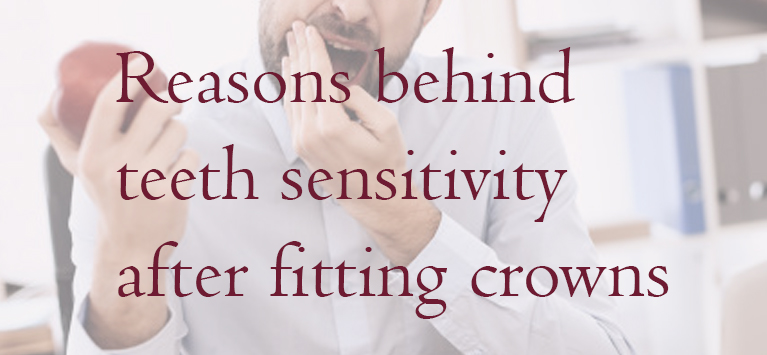
Crowns help in covering your teeth, which are damaged or decayed. They look like your natural teeth and protect your teeth from further damage.
Tooth crowns are very useful for people who have undergone root canal treatment, suffering from tooth discoloration or damage. These crowns need to be replaced if you feel sensitivity.
Leakage of cement
While fitting your crown, the cement may fail to bond properly with crown resulting in leakage. This cement leakage causes the crown to shift, or even they fall off and results in pain. This is the main cause of sensitivity in teeth after fitting the crown.
Bacterial damage
If the roots are severely damaged due to bacterial infection, they will die and result in a tooth abscess. This is a very painful case that occurs at the root or between the tooth and gum.
A root canal treatment is the best choice to correct this, but the infection may repeat so that the crown needs a replacement again.
Bite issue
If the crown fixed is too high, it creates an odd sensation in biting. This is also a reason for sensitivity.
Bruxism
People who suffer from bruxism grind and clench their teeth forcefully. This pressure hurts the tooth and results in pain or sensitivity.
Referred pain
This is also a case where the sensitivity might occur to the adjacent tooth rather than the treated tooth. They occur due to the irritation caused by the crown. This adjacent tooth sensitivity is known as referred pain.
Root damage
Once cracks occur in the tooth’s outer hard layer, it gets weakened. Then a fracture occurs in the root, which makes chewing painful. The best way to solve this problem is to extract the whole tooth and the crown.
Gum Infection
The gums surrounding your crown can decrease that exposes a portion of the root. Once your roots are visible after replacing the crown, you will experience more hot or cold sensitivity.
In turn, exposed roots will set the stage for even more plaque build-up and diseases. It may not be necessary to replace the crown in this situation, and your dentist may prescribe a mouthwash supposed to cure gum infection.
Cavity
Cavities can develop if too much plaque accumulates. The underlying nerves get infected if the cavity multiplies under the crown. This results in major pain. This problem needs a root canal therapy where a tiny hole is drilled into the crown to eliminate the inflamed nerves and tissues around it. It is very important to correct this problem.
Remedies for sensitivity after crown placement
- Maintaining good oral hygiene is the first step to prevent any problem including your overall health. Brushing and flossing the teeth regularly will keep your mouth away from bacteria accumulation and protects from infection.
- Doing exercises release a hormone called endorphin, which is a natural pain reliever of our body as well as the tooth.
- If you have the problem of teeth grinding, you can wear a mouthguard to protect your crown.
- Meditation or yoga also helps you to forget the pain and relax.
- Saltwater gargling for about thirty seconds works fine as it cleans the infected area and relieves pain temporarily.
- Keeping ice pack over the cheeks by wrapping it in a towel also reduces pain and swelling.
Few Postcare tips to be followed after Root Canal Treatment

It is normal to get pain after a root canal treatment as it is a major procedure. This process involves deep cleaning of the inner chamber of the tooth. Due to this, the nerves and gums surrounded by those teeth get irritated.
The pain is just temporary. In fact, a root canal treatment is itself to cure the pain of the fractured or decayed tooth. You will get mild to moderate pain after the treatment for few days. If the pain goes for a long period, you should consult a dentist.
Do not stress
You should not stress on the tooth until getting a crown. You should avoid chewing on the treated area and try to chew it on the opposite side of that area.
Brush your teeth carefully
Be mindful in the area being cleaned while flossing and brushing. Obviously, the surrounding gums and teeth still need adequate care. So be attentive, but soft.
Flossing over temporary filling will be a little more difficult. Take your time and don’t make the floss force.
Be careful about eating
You might be thinking about what to eat after the treatment. You can start to eat once you get ready, but be careful about choosing the food. Always choose soft foods and avoid hard or crunchy foods.
If you eat crunchy foods, it may damage the temporary fillings. Those temporary fillings act as a sealant until the permanent restoration is fixed.
Hard foods will damage the fillings or even break the tooth. Hence, you should be very careful about what you eat until getting the permanent restoration.
Fix the crown
During root canal treatment, the interior area of your tooth will be removed, making the structure of your tooth to be poor. Thus, in order to protect the teeth from further damage, a cap or crown should be placed.
These crowns are placed at the second stage of the treatment once your tooth and mouth are healed. Crown plays an effective role in bringing up the proper shape of the tooth.
Sometimes there will be pain after placing a new crown also. It is normal, and the pain diminishes quickly.
Pain relievers
To reduce inflammation and relief from pain, medicines like Ibuprofen or Tylenol can be used. They are anti-inflammatory and reduce the discomfort that you may feel after the day of treatment for some days.
Yoga and meditations also help you to relieve from pain apart from pain medications.
Regular cleaning
You should not skip any appointment given by your dentist. Proper cleaning keeps you healthy and free from infection. If there is a pain for a long period after the treatment, visit your dentist for an alternate solution.
Points to remember
- Do not brush aggressively
- Always eat soft foods, and avoid hard or crunchy foods
- Do not fail to go any appointments
- Visit your dentist as soon as if the pain gets longer.
Root canal treatment aftercare is very important as it involves one of the major procedures. Following these rules helps you to quickly recover from the pain. We also should thank the modern techniques as the olden techniques are more painful.
What causes tooth enamel erosion?
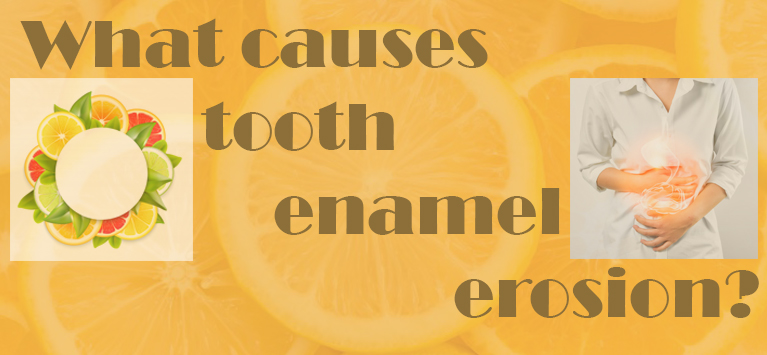
You won’t believe if I say your tooth enamel is the strongest tissue in our body. They are very stronger than bones and even harder than steel. Enamel is a very hard outer layer of your teeth that protects your teeth from damage or decay.
Even though they are harder, it can be broken and leads to enamel erosion. They lead to various dental problems. Here are some reasons for enamel erosion.
Acidic foods
Do you know acidic foods put your teeth enamel at risk? Yes, fruits like orange, lemon, strawberry, and grapes, etc., are healthy to your body, but they will erode your enamel. This is why they should be eaten along with water to minimize the damage level. These foods are not the only product that harms your teeth, products like pickle, ketchup, coffee, wine, etc., also wear away your enamel and stains your teeth. These foods should not be consumed regularly.
GERD (Gastro-Esophageal reflex disease)
There will be a pipe that connects your mouth with the stomach called Esophagus. When GERD occurs, the stomach acid flows back and reach the mouth. They too wear down your enamel leading to enamel erosion.
Xerostomia
The saliva in your mouth removes food debris and bacteria in your mouth and prevent from decay. They also neutralize the acids in your mouth and protect from enamel damage. When there is a lack of saliva secretion, dryness in the mouth occurs leading to enamel erosion. Several factors like smoking, diabetes, HIV, chemotherapy, etc., are responsible for this dryness in the mouth.
Poor dental habits
Your saliva is responsible for constantly neutralizing the acid in the mouth. But if you eat more acidic foods and fail to brush your teeth twice and floss, your outer layer of the teeth will be weakened over time. You should brush after an hour if you eat something sugary or acidic.
Eating disorder
Some people suffer from fear of getting overweight and avoid eating proper food, and this eating disorder is called anorexia. Due to this, they lack nutrition. This lack of nutrition may lead to enamel erosion. Bulimia is another eating disorder where people eat more amount of food in a small amount of time. Then they attempt to get rid of the consumed food out by vomiting to lose their weight. When they do this often, the acidity in vomit damages your tooth enamel and erode it.
Bruxism
Bruxism or teeth grinding is another problem which occurs mainly due to anxiety or stress. Occasional teeth grinding is normal, and it won’t make any problem. Regular teeth grinding should be noticeable and must be treated. When they left untreated, the enamel will be removed slowly, leading to enamel wear, and a chip, or crack in the tooth.
Health disorders
Some health disorders are also associated with these enamel erosion.
There are some symptoms that help you know your enamel is eroding:
1) Sensitivity in tooth
2) Pain and discomfort
3) Tooth discoloration (yellowish teeth)
4) A chip or crack in the tooth
5) Translucent or shiny teeth
If you notice these symptoms, consult a dentist to get the problem fixed earlier. There are some preventive measures also to prevent enamel erosion. They are:
1) Avoiding or minimizing certain foods from your diet.
2) Following proper dental hygiene routine.
3) Wearing a mouthguard if you have bruxism.
4) Dental bonding treatment.
5) Crowns or veneers treatment.
Follow these preventive measures to avoid various teeth problems in the future. If you found any of the symptoms matching you, consult a dentist immediately.
These foods are good for your body but bad for your teeth
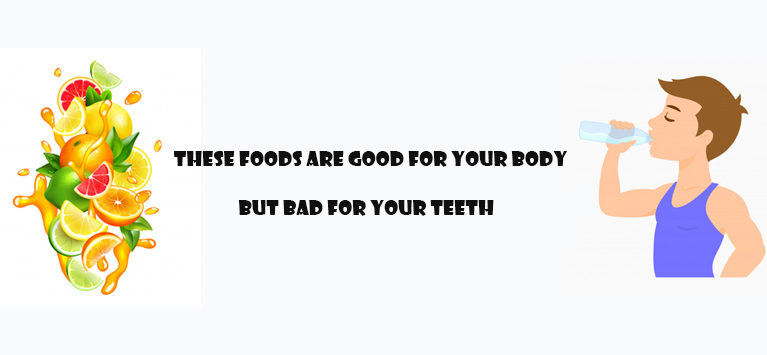
For a healthy lifestyle, it is necessary to eat healthy foods that have good nutrition. The same will be fit for our oral health too. But sometimes these healthy foods are bad for your teeth. However, following good oral hygiene and meal timing will help you to overcome this problem. Here are some foods that are good for your body but bad for your teeth.
Acidic or citric fruits
Fruits are rich in fibers, vitamins, minerals, and antioxidants. They are very essential for your body, but they are bad for your teeth. This is because they contain acids and sugars that breakdown your enamel and cause damage to your teeth.
Dried fruits like prunes, raisins are rich in antioxidants and fibers, but are harmful to your teeth as they contain concentrated sugars. They are also sticky, and they stick on to the teeth and erode the teeth gum and damage the teeth.
It is recommended to drink water or rinse your mouth after consuming citric fruits to dilute the acids and sugars.
Fruit juices
Some people think to consume fruits as juice rather than eating. It may taste better than eating and also have good nutrients, but they are bad for your teeth as they contain acids from multiple fruits and concentrated sugar. They erode your gums and worsen your teeth.
Drink a little water or rinse your mouth after drinking fruit juice to dilute acids. It is better to eat the whole fruit rather than consuming it as juice.
Sports drinks
Sports drinks help in regenerating energy, weight loss, and improving concentration. They consist of carbohydrates that will convert into carbonic acid during a reaction in our mouth. This acid will damage your tooth enamel.
Sports drinks contain caffeine as a main ingredient, and they cause discoloration of the teeth and weaken the enamel.
Starchy foods
Not only sugary foods are harmful to teeth, but foods like white bread, pasta, pizza, burgers, and French fries contain starch, and they get easily stick on teeth and lodged in between the teeth.
This starch will convert into sugar before the digestive process. These sugars are bad for your teeth and damage the enamel.
Vitamin tablets
Some people will consume vitamin tablets due to vitamin deficiency in their body. This vitamin tablet contains concentrated acids, and they harm our teeth when they stick on them.
Ice cubes
Drinking water is good for both your overall health and dental health, but people love to drink it when they contain ice. Sometimes, they bite those ices. Biting this ice creates the risk of chipped tooth or breakage in the tooth.
Hard candies and Chocolates
A study shows eating candies provide a long life, but they contain sugar, and they stick on to our teeth, and it takes a long time to dissolve. They cause damage to the teeth by creating a cavity. Also, eating hard candies has a risk of breakage in teeth.
Chocolates are good as it prevents cardiovascular diseases. Nowadays, chocolates are not pure, and they contain sugar and cocoa.
Cocoa is good for teeth as they contain antioxidants that prevent teeth from attacking bacteria, but again the role of sugar is bad for teeth.
Be careful about what you eat. Everything has both good and bad. Do not take anything frequently. Follow good oral hygiene and also maintain a healthy lifestyle.
Essential eating tips for new denture wearers

Dentures are the appliances designed by humans to replace the missing teeth. They are custom-molded plastics that fit in your mouth. After getting this denture, you may feel uncomfortable for some weeks. Your saliva will be secretion will be more and causes your denture to slip. They result in some sore spots. It takes some time to adjust your life with dentures. These eating tips can help you adjust your life with new dentures soon.
Begin slowly
The most challenging part of learning your new dentures is usually eating. In contrast to your natural bone-fixed teeth, artificial teeth only rest on the gums.
Don’t be discouraged at first if you experience a few failures.
Try chewing food on both sides of your mouth.
You might feel the other side loosening and tipping when you chew on one side. Thus chewing on both the sides helps you prevent tipping.
With the help of mastication muscles in your mouth, you can control your dentures naturally, but it takes some time, and you need practice and patience.
Start with soft foods
Starting with soft foods is the first rule after wearing a new denture. Soft foods don’t require additional chewing.
Eating hard foods like raw carrot, crackers, red meats, or any other crunchy foods creates some pressure in gum tissues and causes the risk of inflammation or irritation. Relax and try these simple tips before your gums adapt better to the denture plate
Eat mashed foods
Mashed foods like puddings, apple sauce, scrambled eggs, mashed potatoes, and cooked cereals provide an adequate amount of nutrition without giving any stress to your jaw muscles.
Test the temperature
Due to the insulating effect of the dentures, you won’t judge the temperature of the food. You should be careful as they may burn your mouth. Before putting the food in your mouth, check hot foods using your lips.
Do not hold fluids in your mouth. That may loosen dentures at the bottom. Do not eat spicy foods as they can cause stinging or burning if you have sores or discomfort.
When eating solid foods
After getting comfortable with dentures, you can start eating solid foods. Cut foods small pieces before eating.
- You should be aware of how much time you are taking to eat and how you chew your food. You can take more amount of time for eating; eating quicker may slip your dentures, and cause pain.
- As mentioned above, chew your food on both sides of your mouth by distributing the foods evenly. This will help your dentures to be stable while eating.
- You should chew your food thoroughly and slowly. Do not swallow a large piece of food without chewing because it may cause sudden choke.
- Chop vegetables and fruits into tiny pieces because it will be easy to eat or cook before serving.
- Eat sticky foods that are healthy to eat along with liquids, because it will be easier to swallow and chew.
- Avoid hard red meats and replace it with chicken, eggs, fish, and legumes.
- Avoid gummy foods such as caramel, peanut butter, marshmallow treats, etc., as they may stick on your teeth, and cause difficulty in cleaning.
- It takes time to get adjusted with whatever you do. Patience is the must one. However, little soreness and pain are common, but if the pain stays for a long time, you should consult your dentist.





